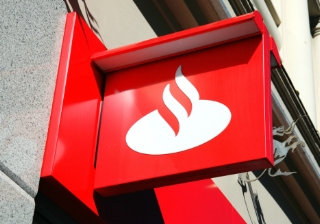Bridging is on the rise – here’s why lending volumes could reach new heights
Paresh Raja, CEO of Market Financial Solutions, says brokers must act swiftly to secure opportunities for their clients – a demand that bridging finance is well positioned to meet.

Bridging loans have come in and out of fashion over the past two decades. Their popularity grew rapidly in the wake of the 2008 financial crisis, when stricter criteria from mainstream lenders opened the door for more agile, specialist providers. In the 2010s, when the base rate was at record-low levels, there was then greater competition with specialist mortgages.
In recent years, however, demand for bridging products has picked up once again. In fact, recent data from the BDLA shows that bridging loan applications surged by 55.3% in Q1 2025 compared to Q4 2024, while completions held steady at £2.8 billion – matching last year’s record high.
As the Bridging & Development Lenders Association’s CEO put it, “the sheer scale of the rise in applications is striking and, if even only a portion of these convert, we could see lending volumes reach new heights over the next two quarters”.
So, what’s fuelling this growth? And why could the sector reach new heights?
Mainstream finance is falling short
One of the clearest drivers behind the sector’s recent momentum is the lack of reliability from traditional lenders. The Bank of England’s rate hikes between 2021 and 2023 made high-street banks more risk-averse, resulting in longer timelines, more rigid criteria, and increased fall-through rates for brokers and investors alike.
This environment makes completing on deals with mainstream finance increasingly difficult. Recent data from Quick Move Now shows that 41% of agreed property sales in Q2 failed to complete – up from 32% in Q1. In nearly half of these cases (45%), mortgage approval issues were the primary cause. Another 35% cited broader challenges in securing a mortgage at all.
These figures align with what we’re seeing on the ground – traditional lenders are struggling to deliver speed or certainty, which are two qualities that bridging finance can offer brokers in abundance.
A shift in investor behaviour
This discord between traditional lenders and investor needs is that investor behaviour is evolving in response to the wider market dynamics at play.
Previously, many investors focused on ‘project’ properties – such as those requiring refurbishment or development. But with rising costs, EPC regulations tightening, and property prices softening, there’s a marked shift toward newer, ready-to-let homes.
These types of properties may cost more upfront, but they offer faster returns, fewer complications, and immediate compliance with energy efficiency standards. As a result, investors are placing a premium on speed and certainty. For this reason, brokers are increasingly turning to lenders who can provide these qualities.
Bridging loans offer a competitive edge
On that note, there’s a sense that the perception of bridging loans has changed.
Once clouded by a murky reputation, with the term ‘loan sharks’ never far away, there has been greater appreciation over the past 10 or 20 years that bridging loans can be flexible problem-solvers, and are often deployed when chains collapse, mortgage offers are delayed, or a quick development exit is needed. As the market becomes more competitive and deal timelines tighten, this ability to step in quickly is becoming even more valuable.
In turn, this means that bridging finance has graduated from being a last-resort solution into a strategic and viable tool to gain an edge. The same Quick Move Now data shows that chain breaks were up 14% in Q2, further highlighting the need for the safety net that short-term finance can provide when traditional funding routes fall short.
And it's not just about salvaging deals. Bridging finance is now being used strategically – giving borrowers a competitive edge by enabling fast, chain-free offers that appeal to sellers looking to sell quickly. In a market that’s increasingly defined as a buyer’s market, this speed and flexibility is helping investors not just save deals, but win them.
Looking ahead
The common thread through these trends is that bridging finance is almost certainly here to stay. With uncertainty returning to the financial markets and wider economy off the back of higher-than-expected inflation in July and a severe lack of economic growth, I expect mainstream finance to remain risk averse.
Indeed, according to most economists, we’ll see two further rate cuts this year from the Bank of England, but if it follows its current trajectory – with incremental 25bps cuts each time – it will take a while yet for rates to fall significantly enough for high street lenders to loosen their criteria. As such, bridging finance (and specialist finance more broadly) could remain a popular tool that investors look to when purchasing.
Supporting this, the number of potential buyers in the UK market is reportedly up by 6% in 2025 compared to 2024, maintaining a competitive environment. Consequently, brokers must act swiftly to secure opportunities for their clients – a demand that bridging finance is well positioned to meet.
Ultimately, it feels like each year brings with it new data that reflects the growing demand for bridging finance. As such, more than anything, it shows that bridging finance is no longer the niche solution it once was.
We foresee current trends continuing, so it’s important that the specialist finance sector continues to adapt its short-term offerings to best serve brokers and their clients. If we can do that, there’s no reason why bridging volumes can’t continue to break records in the coming months and years.

Breaking news
Direct to your inbox:
More
stories
you'll love:
This week's biggest stories:
Budget
Budget: Government introduces mansion tax on high-value homes

Budget
Budget: Government introduces £2,000 salary sacrifice cap

Lifetime Isa
Budget: Lifetime ISA to be scrapped in favour of new first-time buyer ISA

Budget
Budget: Property income tax to rise by 2%

FCA
Firms required to report complaints involving vulnerable customers under simplified FCA rules

Santander
Santander joins mortgage price war with new rates from 3.51%
